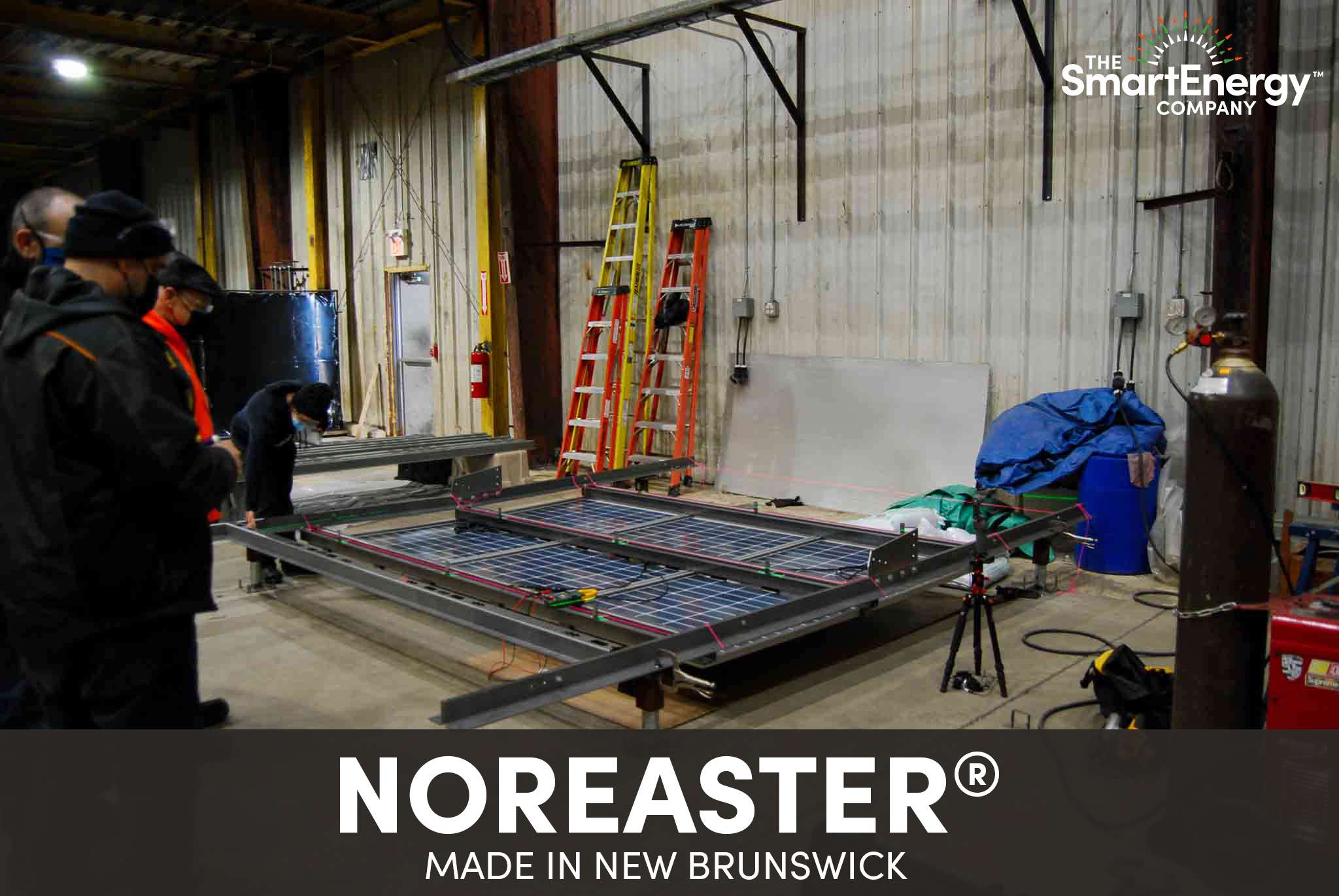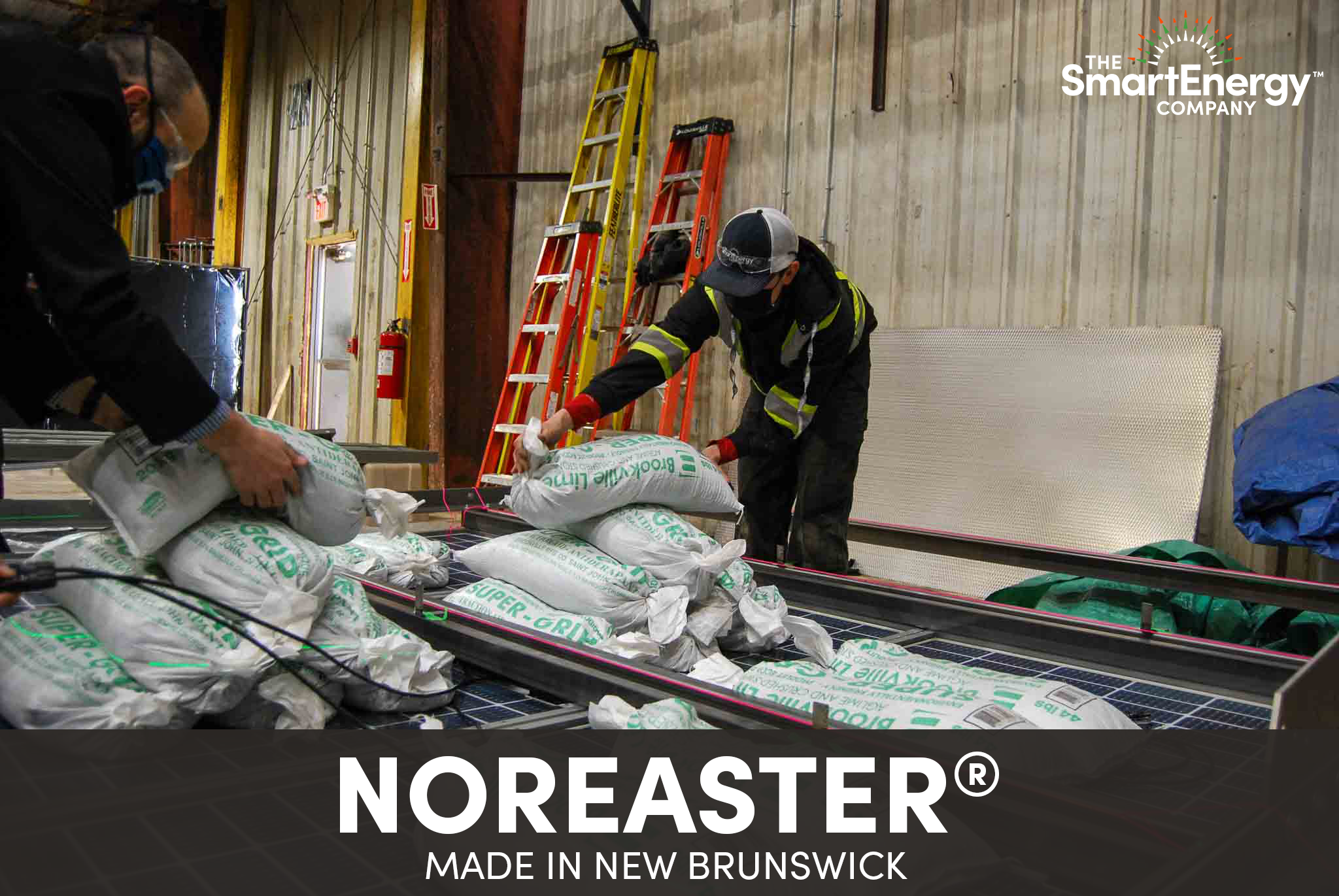NOREASTER® - Winter Friendly Solar Energy
By: Matthew Conradi
February 2020
Winter time is hard, on everything. On our homes, cars, roads. It’s hard on us. A typical winter morning for myself consists of half heartedly tossing a pair of boots on, laces just hanging, matched with perhaps shorts and a t-shirt, if that, on my way to start my car. All in an effort to minimize the amount of manual ice scraping required prior to leaving for work. I then retreat back inside to desperately and foolishly kick my boots off across the living room, sending cascades of slush across any floor surface in sight. I’ll later step in the resultant freezing cold slush puddles with my fresh-out-of-the-dryer cozy socks, which will initiate a squawk that could only be replicated by something of a prehistoric nature. Winter is hard, on everything.
The seemingly relentless nature of wintertime in Canada is something that we recognize, and often receive questions on. How are the solar energy systems we install affected by nasty winters?
What About The Wind?
Ground-mounted solar arrays are subjected to a lot of stress. They’re often mounted in the middle of a wide open field, completely unprotected from the elements, acting as a gigantic solar panel sail in the wind. We’ve all experienced that effect, trying to gracefully cover ourselves with an umbrella amidst a downpour of rain. Quickly, we find ourselves not only soaking wet, but desperately fighting against the wind for fear of losing our grasp entirely!
The good news is that individual solar panels are designed to withstand hurricane-force winds without blowing apart. The bad news is that this means absolutely nothing if the structure they’re mounted to isn’t engineered to the same standard. With our product, those hurricane-rated solar panels could blow apart and the structure will still stand, stubbornly in the middle of that field.



NOREASTER® is our modularized and packaged solar energy solution proven to withstand the harsh climate of Atlantic Canada. It’s something that has undergone extensive research and development, and real world testing to ensure it’s tough enough to stand up to our climate.
What About The Snow?
So we’ve determined that with NOREASTER®, your investment isn’t going to be lifted out of the ground by a gust of wind and roll around like an expensive tumbleweed, but what happens when it snows? Solar panels aren’t going to make a whole lot of power if they’re covered in snow, right?
One of the key features you get with NOREASTER® is bi-facial solar panels, which produce electricity on the front side of the panel from direct sunlight, as well as on the back side of the panel from reflected light energy off the ground. In the winter time when the ground is covered in snow, there’s a significant amount of reflected light available for the bi-facial solar panels to absorb. Now here’s the cool part: when that reflected energy is absorbed on the back side of the panel, which obviously isn’t covered in snow, it starts to generate power. Once it starts to generate power, it starts to generate heat. This heat then aids in warming up the front side of the solar panel, allowing for any accumulated snow to easily slide off.
Now, if I weren’t employed largely for my science-based technical knowledge, I’d swear this bi-facial effect is some sort of Harry Potter level of wizardry.
I may have a predisposition to complaining about soggy socks and slippery roads in the winter time, but the good news is that technology doesn’t have emotions. We can engineer around technology and make it work in any environment imaginable. Rest assured, no stones were left unturned in the development of NOREASTER®.
It’s socks may get wet, but it isn’t going anywhere.
NOREASTER® ensures energy users in Canada continue to receive benefits from producing their own clean solar energy, whatever the weather.
